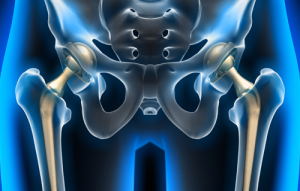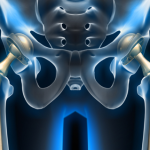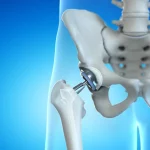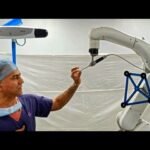DAA v/s Traditional Hip Replacement: Dr. Ashwani Maichand
Hip replacement surgery has transformed the lives of millions, offering relief from debilitating pain and restoring mobility. Total Hip Replacement (THR) has traditionally been the gold standard for addressing severe hip arthritis and other joint-related conditions. However, advancements in medical technology have introduced the Direct Anterior Approach (DAA) as a minimally invasive alternative. Renowned orthopedic surgeon Dr. Ashwani Maichand sheds light on the key differences between DAA and traditional hip replacement, helping patients make informed decisions about their treatment options.
Understanding Traditional Hip Replacement
Traditional hip replacement, also known as posterior or lateral approach THR, involves making a sizeable incision (10-12 cm) on the side or back of the hip. The surgeon dissects muscles and tendons to access the joint, replacing the damaged hip with a prosthetic implant. While effective, this method has longer recovery times and a higher risk of post-operative complications.
Pros of Traditional Hip Replacement:
- Proven success rate: Decades of clinical evidence support its effectiveness.
- Wider surgical access: Allows for precise placement of the implant.
- Suitable for complex cases: Can be used for severe deformities or revision surgeries.
Cons of Traditional Hip Replacement:
- Longer recovery: Requires extended hospital stays and post-op rehabilitation.
- Higher dislocation risk: Due to the disruption of soft tissues.
- More post-operative pain: As muscles and tendons are cut and reattached.
Direct Anterior Approach (DAA) A Minimally Invasive Alternative
The Direct Anterior Approach (DAA) is an advanced, muscle-sparing technique that allows surgeons to access the hip joint through a smaller incision (6-8 cm) without cutting major muscles or tendons. This approach offers significant benefits in terms of recovery and post-operative comfort.
Pros of DAA Hip Replacement:
- Minimally invasive: Smaller incisions mean reduced blood loss and scarring.
- Faster recovery: Patients can walk within hours after surgery and return to normal activities sooner.
- Lower risk of dislocation: The preservation of soft tissue structures enhances joint stability.
- Less post-operative pain: As no major muscles are cut, discomfort is significantly reduced.
Cons of DAA Hip Replacement:
- Surgeon expertise required: A steep learning curve makes it less widely available.
- Limited suitability: Not ideal for patients with severe bone deformities or complex cases.
- Implant positioning challenges: Requires advanced surgical skill for precise placement.
Which Approach is Right for You?
Choosing between traditional THR and DAA depends on multiple factors, including age, activity level, bone quality, and the complexity of the case. Dr. Ashwani Maichand emphasizes that while DAA offers superior recovery benefits, traditional THR remains a reliable option for complex hip conditions.
Final Thoughts
Both traditional hip replacement and the Direct Anterior Approach have their place in modern orthopedics. While DAA offers a minimally invasive, faster recovery option, traditional THR remains the preferred choice for more complex cases. Consulting an experienced orthopedic surgeon like Dr. Ashwani Maichand can help determine the best approach based on individual patient needs.
For expert guidance on hip replacement surgery, schedule a consultation with Dr. Ashwani Maichand today!








